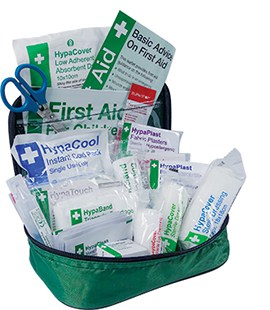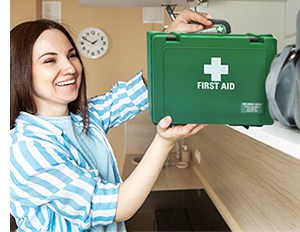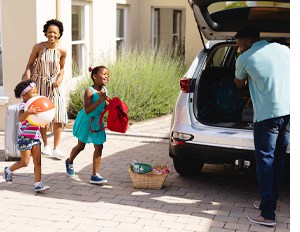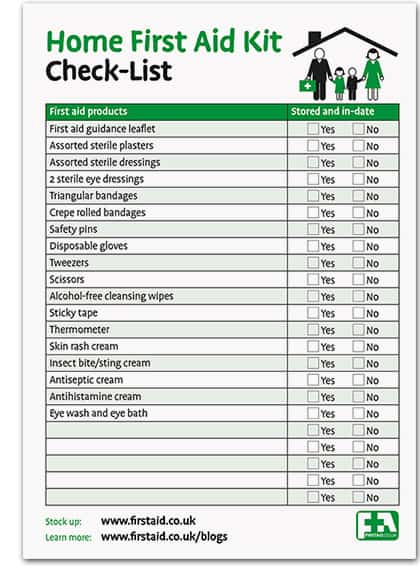
Quick Links:
Why should you have a home first aid kit?
Home first aid kit essentials
Home first aid kit printable checklist
Why you should have a home first aid kit
When we are at work or our children in school, we expect the respective organisations to provide adequate first aid to care for us in emergencies. We would consider it negligent on the part of employers or schools not to provide this, yet all too often first aid at home is forgotten or put off as a task to do later.
In fact, RoSPA (the Royal Society for the Prevention of Accidents) identifies the home as the most common location for accidents, with approximately 6,000 deaths a year considered to be the result of home accidents. Children under the age of 5 and adults over the age of 65 are the most likely to have an accident at home, with falls being the most common.
A first aid kit provides the peace of mind that you can care for yourself or your loved ones, should an accident occur. The ability to quickly apply a dressing or burn care can comfort a distressed casualty and, in very serious cases, even save lives.
First aid kits for work from home
With increased numbers working from home, having an appropriate first aid kit is even more important. The HSE (Health and Safety Executive) suggest that normal domestic first aid equipment should be enough for low-risk work, such as desk-based work.
First aid kits for driving and travel
It is a good idea to carry a first aid kit in your vehicle so that you have supplies available whenever and wherever you need them.
If you are required to drive for work or considered to be a lone-worker, your employers should have assessed your needs as part of their workplace risk assessment and you should be catered for accordingly.
Read our vehicle first aid blog for more guidance on first aid kits for personal and business vehicles.
Home first aid kit essentials
The minimum first aid kit contents suggested by the HSE are as follows:- a leaflet with general guidance on first aid
- individually wrapped sterile plasters of assorted sizes
- sterile eye pads
- individually wrapped triangular bandages, preferably sterile
- safety pins
- large and medium-sized sterile, individually wrapped, unmedicated wound dressings
- disposable gloves.
What should be in a home first aid kit?
Our Family First Aid Kit contains all the above items plus some extra products that families may need from time to time:
- A travel first aid bag to keep everything together
- Some extra plasters (you can never have enough!)
- Blue detectable plasters – in case you need them while handling food
- Burn gel – see our blog on first aid for kitchens and catering
- An eye wash pod – see our eye care blog for more information
- Two additional sterile eye dressings
- An instant cold pack – see our blog on sports first aid for sprains and strains
- A First Aid for Children guidance leaflet – to help you feel confident in your emergency response.
The NHS suggest additional items for a home first aid kit:
- small, medium and large sterile gauze dressings
- crêpe rolled bandages
- tweezers
- scissors
- alcohol-free cleansing wipes
- sticky tape
- thermometer (preferably digital)
- skin rash cream
- cream or spray to relieve insect bites and stings
- antiseptic cream
- distilled water for cleaning wounds
- eye wash and eye bath.
Where should I keep a home first aid kit?
There are several considerations when thinking about where to keep your home first aid kit:
- Accessibility: you want essential items to be quickly accessible to most people in your household.
- Even if children aren’t administering first aid, you may want them to be able to collect the kit to bring it to the site of the accident.
- Does anyone in your household experience accessibility difficulties – do you need certain items to be available on all floors of your household?
- Likelihood: consider where accidents are most likely to happen in the home, for example in the kitchen or near the door to the garden.
- Visibility: make sure it is easy to find your first aid kit – if it is in a cupboard, keep it near the front. Check that everyone in your household knows the location.
- Danger: which items in your first aid kit need to be kept away from children? It is suggested that medicines are kept separately from the main first aid kit so that they are out of reach to children.

Home first aid kit checklist
Use this PDF checklist to make sure you have everything that you need in your first aid kit – you can check off the items on your device or print it out to keep with your kit.
We’ve left some extra space at the bottom for you to add items that are specific and relevant to your household or family.
Make sure you understand exactly what your home and workplace need and that you have the necessary first aid kits and equipment to provide effective first aid.
Read our blog for more information on first aid, or contact us for further advice and information on our products.




